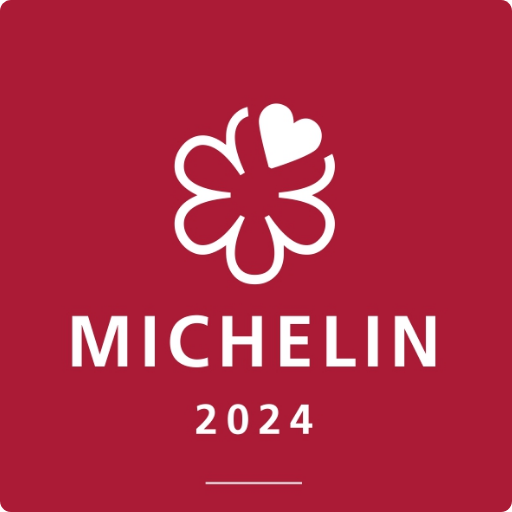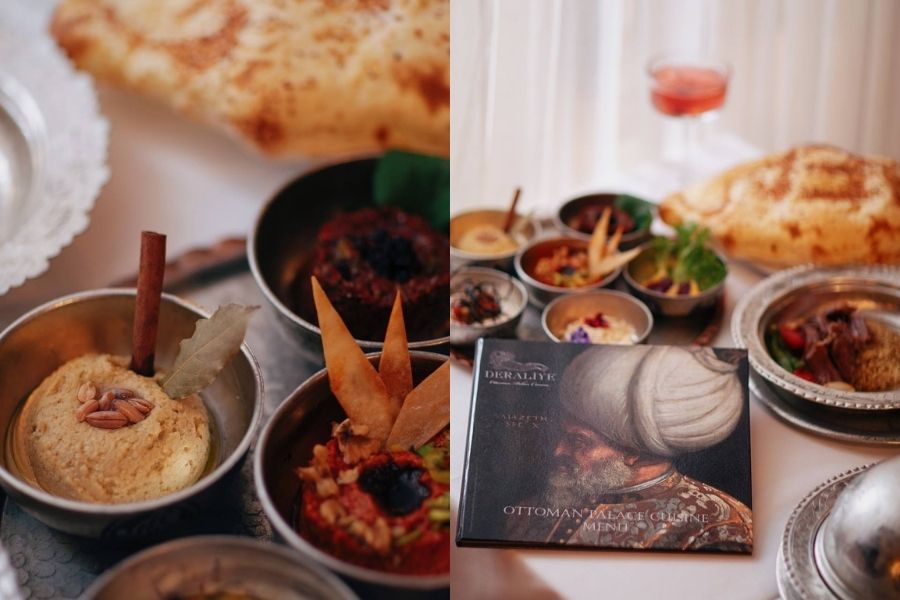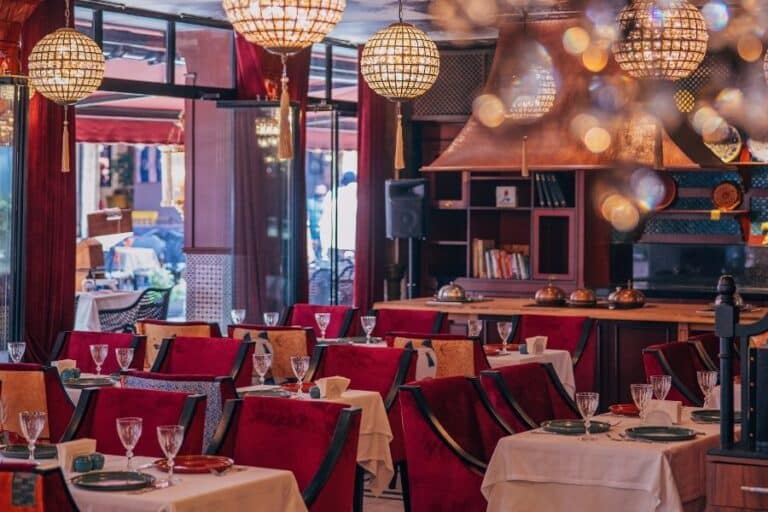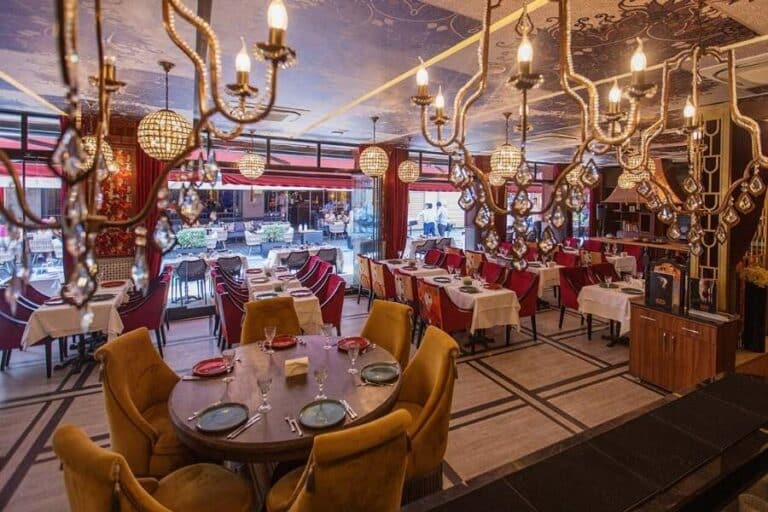The Ottoman Empire has an important place in history, not only for its vast borders and impressive history, but also for its rich and diverse culinary culture. Thanks to its strategic location connecting the continents of Asia, Africa and Europe, this vast empire brought together the flavors of many different cultures and successfully integrated this diversity into its culinary art. Palace cuisine is considered to be the most spectacular part of this mosaic of flavors. Here, food was used not only for satiation, but also as a show of power, artistic expression and a diplomatic tool.
Ottoman palace cuisine is a reflection of the cultural richness of the empire. The dishes prepared in this kitchen attract attention not only for their taste but also for their visual feast. Gold and silver utensils, colorful ceramic plates, and finely decorated tablecloths transformed the palace tables into an art gallery. The meals were presented to the taste of not only the palace staff but also foreign ambassadors and important guests. It was the center of Ottoman diplomacy and at the same time a showcase of the empire’s cultural wealth.
Now, how would you like to travel back in time and spend a day in the Ottoman palace kitchen?On this journey, you will discover not only the food of the palace kitchen, but also the lifestyle, social order and aesthetics of that period.Within the walls of the palace, you will step into the delicious world of the Ottoman Empire, feeling the smells, colors and sounds of history.
Early Morning:Preparations Begin
With the first rays of the sun, the palace kitchen comes to life. Foremen and journeymen gather to plan the menu for the day. The freshest ingredients are gathered from all over Istanbul: Fish from the Bosphorus, vegetables and fruits from the city’s various gardens, spices from caravans from the Far East. Each ingredient reflects the richness and diversity of the palace kitchen.
In these early hours, the kitchen is buzzing with activity and excitement. Fresh produce has just been brought in from the markets, each carefully selected and of the best quality deemed worthy of the palace kitchen. Fishermen bring their catches in the cool of the night to the palace gate before the sun rises. Gardeners harvest fresh vegetables and fruits from the palace’s own gardens. Spices from distant lands are used to add unique flavors and scents to dishes. The selection of each ingredient is the most important factor that determines the quality and flavor of the dishes cooked in the palace kitchen. This preparation phase makes the palace kitchen stand out not only with its flavors, but also with the visual feast and richness it offers.
Before Noon: Meal Preparation
Preparing meals in the Ottoman palace kitchen is like creating a work of art. These are the times when the kitchen is the center of attention and skill. Each dish has its own unique story and cooking technique. This is not only a cooking process, but also the transmission of a historical and cultural heritage.
Meals where flavors are expertly blended
Lamb kebabs are transformed into works of art in the hands of palace chefs. The meat is carefully selected and cooked by skilled hands. Stuffed dishes with olive oil show the perfect harmony of olive oil and fresh vegetables. Spicy pilafs are prepared by blending the aromas of different spices and each one is a burst of flavor. Each of these dishes represents the richness and diversity of Ottoman cuisine.
Preparation of Eye-Catching Presentations
Those who work in the palace kitchen prepare dishes that are not only delicious but also visually impressive. Each meal was carefully arranged to be served in the palace’s glamorous banquet halls. Meals were served on gold and silver plates and in colorful ceramic bowls. This ensured that the food was not only a feast for the palate, but also for the eyes. The tables reflect the splendor and wealth of the Ottoman palace.
Lunch Feast Visual and Taste Feast
Lunch is one of the most sumptuous moments in the palace. Long tables are set with gold and silver plates. On each plate, there are mouth-watering dishes decorated with eye-catching colors. As the courtiers take their places at this rich table, the kitchen team makes final checks to ensure that the food is perfect.
Bu gönderiyi Instagram’da gör
Necati Yılmaz / restaurants / İstanbul (@necati.yilmaz.istanbul)’in paylaştığı bir gönderi
Lunch is one of the most spectacular moments of the day at Deraliye Restaurant, as it was in the Ottoman palaces. This special moment continues a tradition that reflects the splendor and opulence of palaces throughout history. Deraliye’s long tables are set with gold and silver plates, elegant tableware and eye-catching decorations, just like in the palaces. Each plate is decorated with the eye-catching colors and mouth-watering flavors of Ottoman palace cuisine. The restaurant’s menu is full of these rich dishes, each one inviting you to a historical story and a unique taste experience.
Presentation of Historical Flavors in Deraliye
Every dish served at Deraliye Restaurant reflects the sophistication and richness of Ottoman palace cuisine. In the heart of Istanbul, this restaurant offers guests a journey through time, blending the sophistication and elegance of the old world with a modern twist. The kebabs, stuffed with olive oil, spicy pilafs and many other delicacies enjoyed by the palace family are expertly prepared and served. The kitchen team works meticulously to ensure that every detail of the dishes is perfect. This is not just a catering service, but an effort to keep the artistic side and cultural heritage of Ottoman palace cuisine alive today.
Deraliye’s Ottoman Culinary Heritage
Deraliye Restaurant brings the culinary heritage of the Ottoman Empire to the modern world, preparing each dish faithfully to the original recipes. Guests can feel the rich history and culture of the palace cuisine in every bite they take in the restaurant. The lunch banquet offers an unforgettable experience that combines this historical heritage with a modern refined taste.
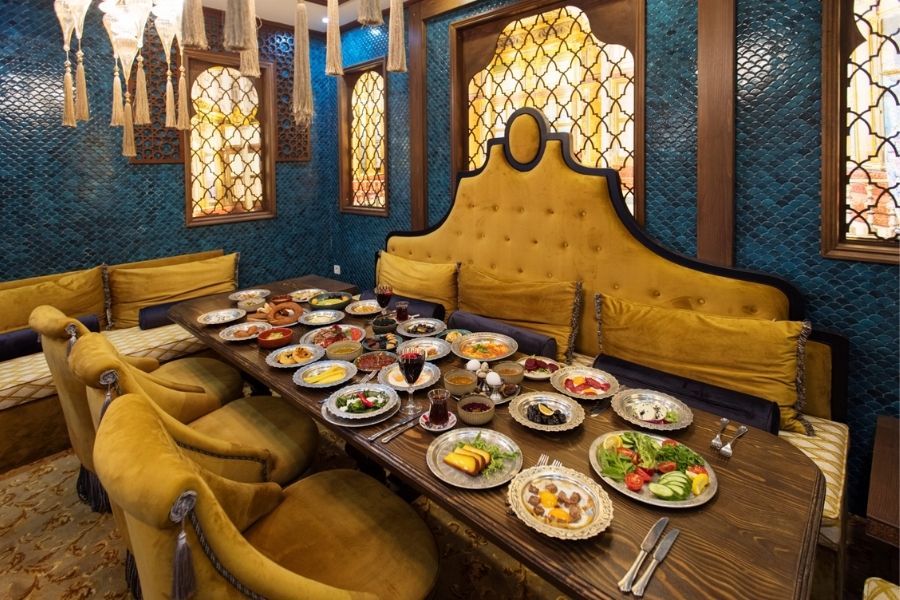
Evening Desserts and Sorbets
After meals, perhaps the most fascinating part of Ottoman palace cuisine begins: desserts and sherbets. This is a time for dessert masters to showcase their skills and indulge the guests of the palace. Desserts such as baklava, künefe and aşure tell the story of craftsmanship and traditional flavors in each layer. Thinly rolled baklava phyllo, carefully pounded pistachios and golden syrup make these desserts not only a feast of taste, but also a visual work of art. The pomegranate-fried crust and melting cheese of künefe, and the rich ingredients and colorful appearance of aşurçe conquer the hearts of dessert lovers.
These desserts are presented in perfect harmony with rose, violet and lemon flavored sorbets. Sherbets are served not only to quench thirst, but also as an expression of tolerance and elegance. Served in the palace gardens, accompanied by gentle conversations and a gentle breeze, these sweets and sorbets reflect the comfort and luxury of palace life. In the evening, these gentle and elegant moments in the palace are crowned with the flavors of desserts and sherbets, turning into an unforgettable experience for the guests. These moments show that Ottoman palace cuisine was not only full of flavors, but also of cultural richness and artistic expression.
Dinner Last Feast of the Day
With sunset, preparations for dinner began in the Ottoman palaces, the most elegant meal of the day. Dinner is usually lighter and more delicately prepared than the other meals of the day. At this meal, appetizer plates, olive oil dishes and seafood are carefully selected and prepared. Each one represents the elegance and diversity of flavors of Ottoman culinary culture.
A Meeting of Exquisite Flavors: Appetizers and Seafood
Appetizer plates adorn the tables with their rich varieties and colors. Artichokes with olive oil, shrimp salads, various kinds of olives, and aromatic herbed cheeses take guests on a journey of flavor. Seafood is prepared with fresh flavors from the cool waters of the Bosphorus. These flavors reflect the palace cuisine’s connection with the sea and Istanbul’s rich marine culture.
Peaceful Evening Music and Tables
Meals are served accompanied by light and soothing music. The gentle melodies of the ney, kanun and oud accompany the conversations of the dignitaries and guests of the palace. This music complements the calm and elegant atmosphere of the dinner, creating a moment of peace and relaxation within the historic walls of the palace. The guests relieve the tiredness of the day with delicious food and pleasant conversations, and enjoy the peace and flavor of the evening to the fullest.
Dinner Traditions of the Ottoman Palace
This dinner is not just a meal, but a part of Ottoman palace life. The tables reflect the aesthetics and elegance of the palace, and the food carries its historical and cultural heritage. For the dignitaries of the palace, dinner marked the end of one day and preparation for the next. This meal offers a rich experience not only in the flavors of Ottoman palace cuisine, but also in its social and cultural aspects.
Night Silence reigns in the kitchen
After the feast is over, the kitchen is exhausted from the day. Masters and apprentices clean the utensils used during the day, the kitchen is organized and preparations for the next day begin. As the doors of the palace kitchen close, preparations for the next delicious journey begin.
A day spent in the Ottoman palace kitchen provides information not only about the preparation and presentation of food, but also about the culture and lifestyle of that period. This cuisine, with its rich historical and cultural heritage, continues to influence world cuisines even today. Deraliye Restaurant aims to keep this rich heritage alive in every plate, in every bite, thus offering its visitors not only a dining experience but also a journey through history.
